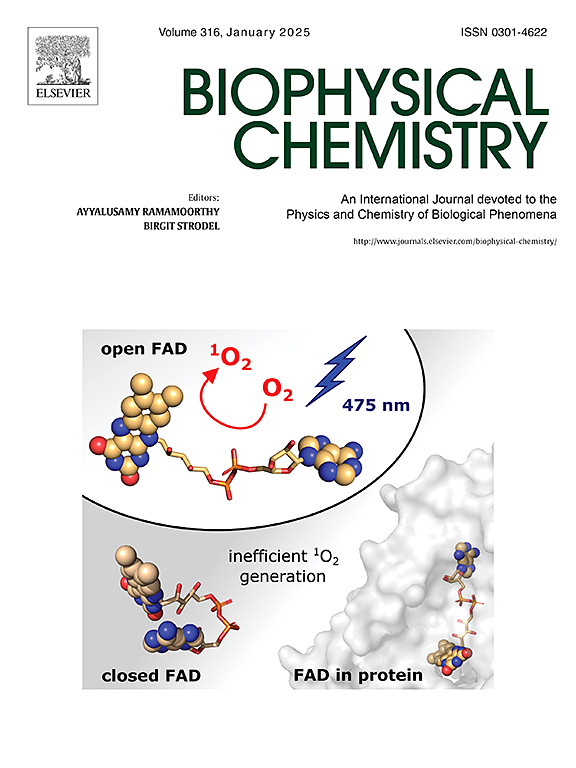解码 SARS-CoV-2 变体:变异、病毒稳定性以及疫苗和疗法方面的突破
IF 2.2
3区 生物学
Q2 BIOCHEMISTRY & MOLECULAR BIOLOGY
引用次数: 0
摘要
本研究调查了SARS-CoV-2的传染性及其免疫逃避机制,特别是通过刺突蛋白的突变使病毒能够逃避宿主的免疫反应。随着全球疫苗接种工作的继续,了解病毒进化和免疫逃避策略仍然至关重要。该分析重点分析了穗蛋白受体结合域(RBD)内的14个关键突变(Arg346Lys、Lys417Asp、Leu452Glu、Leu452Arg、Phe456Leu、Ser477Asp、Thr478Lys、Glu484Ala、Glu484Lys、Glu484Gln、Gln493Arg、Gly496Ser、Glu498Arg和His655Y)。结果揭示了不同SARS-CoV-2变体的免疫逃逸模式一致,特定突变影响蛋白质稳定性、与hACE2受体的结合亲和力和抗体识别。这些发现证明了单点突变如何破坏刺突蛋白的稳定性并降低免疫反应的效力。通过将表达水平和热力学稳定性与免疫逃避相关联,本研究为刺突蛋白的功能特性提供了有价值的见解。这些发现有助于了解免疫逃逸变异,并确定潜在靶点,以提高疫苗效力和开发治疗方法,以应对不断变化的SARS-CoV-2环境。本研究探讨了SARS-CoV-2的传染性及其对免疫逃避的影响。它重点关注刺突蛋白受体结合域(S-RBD)内的14个关键突变,并揭示了各种SARS-CoV-2变体中与免疫逃逸相关的一致模式。研究强调了蛋白折叠稳定性、hACE2结合、抗体逃避等因素对刺突蛋白进化的影响。单点免疫逃逸变异改变病毒稳定性,影响抗体应答成功。这项研究为免疫逃逸变异提供了有价值的见解,并提出了提高疫苗效力的途径。它还为SARS-CoV-2变体的新治疗方法开辟了道路。本文章由计算机程序翻译,如有差异,请以英文原文为准。

Decoding SARS-CoV-2 variants: Mutations, viral stability, and breakthroughs in vaccines and therapies
This study investigates the infectivity of SARS-CoV-2 and its immune evasion mechanisms, particularly through mutations in the spike protein that enable the virus to escape host immune responses. As global vaccination efforts continue, understanding viral evolution and immune evasion strategies remains critical. This analysis focuses on fourteen key mutations (Arg346Lys, Lys417Asp, Leu452Glu, Leu452Arg, Phe456Leu, Ser477Asp, Thr478Lys, Glu484Ala, Glu484Lys, Glu484Gln, Gln493Arg, Gly496Ser, Glu498Arg, and His655Y) within the receptor-binding domain (RBD) of the spike protein. The results reveal consistent patterns of immune escape across various SARS-CoV-2 variants, with specific mutations influencing protein stability, binding affinity to the hACE2 receptor, and antibody recognition. These findings demonstrate how single-point mutations can destabilize the spike protein and reduce the efficacy of the immune response. By correlating expression levels and thermodynamic stability with immune evasion, this study provides valuable insights into the functional characteristics of the spike protein. The findings contribute to the understanding of immune escape variants and identify potential targets for enhancing vaccine efficacy and developing therapeutic approaches in response to the evolving SARS-CoV-2 landscape.
Short summary
The study investigates the infectivity of SARS-CoV-2 and its implications for immune evasion. It focuses on fourteen key mutations within the spike protein's Receptor-Binding Domain (S-RBD) and reveals consistent patterns associated with immune escape in various SARS-CoV-2 variants. The research highlights the influence of factors such as protein fold stability, hACE2 binding, and antibody evasion on spike protein evolution. Single-point immune escape variants alter virus stability, impacting antibody response success. The study provides valuable insights into immune escape variants and suggests avenues for enhancing vaccine efficacy. It also opens the way for novel therapeutic approaches in the context of SARS-CoV-2 variants.
求助全文
通过发布文献求助,成功后即可免费获取论文全文。
去求助
来源期刊

Biophysical chemistry
生物-生化与分子生物学
CiteScore
6.10
自引率
10.50%
发文量
121
审稿时长
20 days
期刊介绍:
Biophysical Chemistry publishes original work and reviews in the areas of chemistry and physics directly impacting biological phenomena. Quantitative analysis of the properties of biological macromolecules, biologically active molecules, macromolecular assemblies and cell components in terms of kinetics, thermodynamics, spatio-temporal organization, NMR and X-ray structural biology, as well as single-molecule detection represent a major focus of the journal. Theoretical and computational treatments of biomacromolecular systems, macromolecular interactions, regulatory control and systems biology are also of interest to the journal.
 求助内容:
求助内容: 应助结果提醒方式:
应助结果提醒方式:


